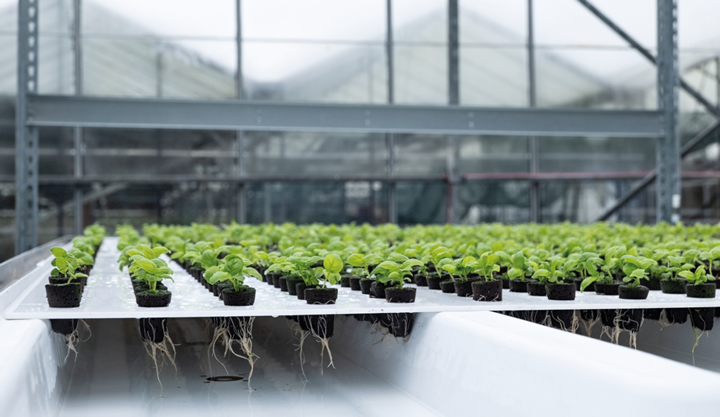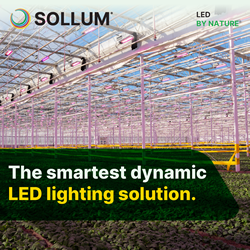Q&A with LettUs Grow Ltd.

Tell us about your product and what you feel sets it apart from similar products.
The Aeroponic Rolling Bench system developed by LettUs Grow combines ultrasonic aeroponic technology with typical hydroponic rolling bench setups found in large-scale vertical farms and greenhouses. What sets the system apart is the productivity uplifts brought by the aeroponics combined with its seamless integration into existing infrastructures, allowing for yield benefits with minimal alterations during installation. The Aeroponic Rolling Benches are versatile, designed for both greenhouse and vertical farm environments, offering the option to retrofit or create dedicated aeroponic facilities. The use of ultrasonic aeroponics, suspending plant roots in air and irrigating with a nutrient-rich mist, differentiates the system from traditional hydroponic systems, providing crops with increased oxygen and potentially boosting yields by up to 22%.
Tell us about the R&D behind this product. Who is this product designed for? What problem is it solving?
The development of the Aeroponic Rolling Benches involved collaboration with CHAP and Innovate UK, leveraging a combination of experienced growers, researchers, and engineers. The product is designed for commercial greenhouse and vertical farm markets, aiming to accelerate crop growth, meet rising food demand, and reduce water and fertiliser usage. The R&D process included trials at CHAP's Vertical Farming Development Centre, comparing the performance of the aeroponic benches with hydroponic systems. Results showed an average uplift in biomass production of 22% for the Aeroponic Rolling Benches, addressing challenges related to resource efficiency and agricultural sustainability. Going forward, LettUs Grow are actively looking to work with more agronomists to validate the aeroponics with a wider selection of crops outside of leafy greens.
Give us an idea of the installation process.
The installation of the Aeroponic Rolling Benches is designed to be a smooth process. The benches have been specifically created to retrofit into existing infrastructures, minimising the need for alterations. Each installation would need a full review of the electrical capacity to ensure a smooth installation process, as well as a consultation call with LettUs Grow’s development team. The initial installation is completed, requiring the laying out of power distribution rails, connecting to the control box, and rolling the aeroponic benches into place. This process minimises disturbance to existing infrastructure.
How is your company set up to support the users of your products?
LettUs Grow offers initial support through its commercial team, guiding users in understanding their aims and requirements. The delivery team then conducts site assessments to gather key parameters, ensuring compatibility and informing product recommendations. The company also provides in-house modification or custom-built aeroponic trial setups for users. Ongoing support involves discussions about individual project requirements and staff training to ensure all operators are confident working with the aeroponic equipment safely, efficiently and effectively. LettUs Grow emphasises a collaborative approach with users to address specific needs as they arise.
What feedback have you received from the field? Can you share a use case and the results?
Trials conducted at CHAP's Vertical Farming Development Centre showcased positive results for the Aeroponic Rolling Benches. The collaboration with CHAP provided real-time operational and biological insights, leading to valuable feedback for product improvement. Results from growth cycles of micro-radish demonstrated an average uplift in biomass production of 22% compared to hydroponic benches. The Aeroponic Rolling Benches integrated smoothly into the vertical farm, with minimal disturbance to infrastructure and operational processes. The success of the collaboration with CHAP validates LettUs Grow's ability to support indoor growers with innovative aeroponic technology, contributing to the goal of creating sustainable food systems.
Comments (0)
This post does not have any comments. Be the first to leave a comment below.
Featured Product

